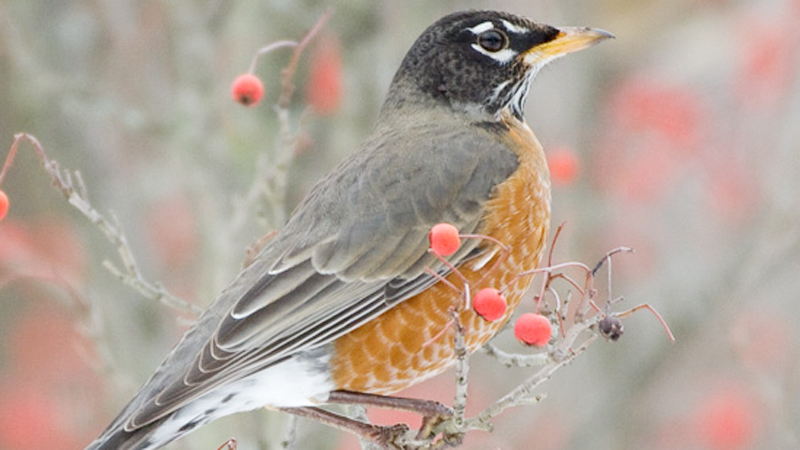A sure sign of spring: Robins return

By DAVE CAMPANA
Ohio Certified Volunteer Naturalist
CANFIELD
The last thing the children in the movie “Honey, I Shrunk The Kids” would want to see is a red, red robin come bob, bob, bobbin’ along.
The kids couldn’t hide nearly as well as the invertebrates the bird easily finds, and they would soon become tasty snacks.
The American Robin, Turdus migratorius, is the most abundant member of the thrush family, which includes the Eastern Bluebird.
Migratory birds, robins can be found throughout North America, from the northernmost provinces of Canada to Central America at some point during the year.
They arrive in our area just before spring and soon begin their courtships. The males can be quite competitive often attacking objects that reflect their image. The female is slightly smaller and paler than the male.
From April through July, robins will breed two to three times, each producing three to five eggs in a new nest.
With deciduous trees leafless in early spring, the female builds her first nest in evergreens or on human structures to provide shelter from rain and predators. The foundation of the cup-shaped nest consists of coarse grass and twigs woven together. Mud is smeared onto the inner bowl, then lined with soft materials to cushion the eggs.
Subsequent nests will often be in smaller trees or dense shrubs in woodlands near open feeding grounds. Suburbs and agricultural areas offer similar habitat putting the birds in close proximity with humans. They seem to have adapted well.
The chicks hatch after 14 days, and the female feeds and broods them until they fledge (leave the nest). Young robins have black-and-white speckled chests, and white spots on their shoulders and backs. They will try to stay close to their mother and continue to beg for food for the next two weeks when they should be strong enough for sustained flight.
For the next four months, the young robins will stay near their birth territory. In autumn, mixed-age flocks gather for migration to the South.
The bird’s diet is about 60 percent fruits and berries and 40 percent invertebrates. Their diet is more vegetarian at their wintering grounds, and they are more social due to the lack of breeding competition.
While the oldest known robin lived to age 14, their average life expectancy is only two years with only a quarter of fledged birds living long enough to migrate. Raptors and cats prey upon adults, while large birds and squirrels attack the young.
A number of times while digging in my garden, I have seen a robin watching me. A few gorged themselves on the worms I tossed them. They never show any gratitude, but having them around is thanks enough.
To learn more about robins, go to http://go.osu.edu/robin.
 43
43
